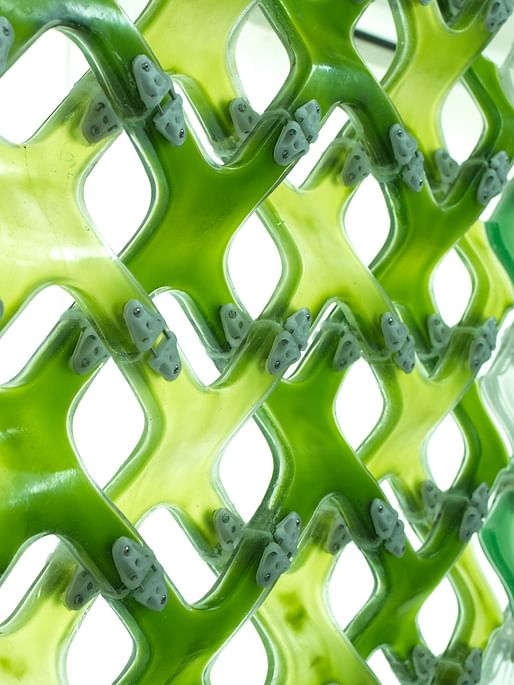

A professor of architecture from the University of North Carolina at Charlotte has been awarded a $1 million grant for the development of windows that incorporate screens of microalgae. Professor Kyoung Hee Kim, who has spent decades researching the topic, believes her “biochromic windows” will offer multiple environmental, economic, and health benefits.

The system is designed to reduce building energy consumption and carbon dioxide emissions through "closed-loop regenerable technology." According to Professor Kim, the algae layer can increase energy efficiency and improve air quality, carbon capture, and renewable energy production. The tint and color of the algae can also respond to solar intensity and daylight to create optimal indoor conditions.
Excess algae can be used to support domestic water heating or harvested and used in the development of food, fertilizer, cosmetics, and biofuels, according to Professor Kim’s company EcoClosure.
“Algae has very effective carbon sequestration, doesn’t require land to grow, and doesn’t require agricultural water,” Professor Kim explained. “It can use salty water or waste water, for example.”
The $1 million grant will enable Professor Kim to prototype the window over the next two years, including the conducting of performance testing, the obtaining of performance certificates, and the scaling of mass production manufacturing.
“Real-world installation requires rigorous testing and vetting processes before actual operations, and this NSF grant allows us to continue that next round of R&D activities,” said Professor Kim, who has already been contacted by potential installation sites at museums, residential buildings, commercial offices, and industrial spaces. “Our end goal is to be able to mass produce the system with an attractive cost for wide users and to obtain performance certificates from government authorized agencies.”

Professor Kim and UNC are one of a number of educational institutions that have recently unveiled breakthroughs in material science. Last month, MIT developed a 3D printed material that uses air pressure to warn about its own movement, while UVA researchers developed 3D printed structures made of soil and seeds.
In June, Texas A&M researchers received $3.74 million for the development of 3D-printed hempcrete buildings, while Washington State University demonstrated a way of using shrimp cells to create stronger, more sustainable concrete.
No Comments
Block this user
Are you sure you want to block this user and hide all related comments throughout the site?
Archinect
This is your first comment on Archinect. Your comment will be visible once approved.